Courtesy Daniele Tamagni and Danziger Projects
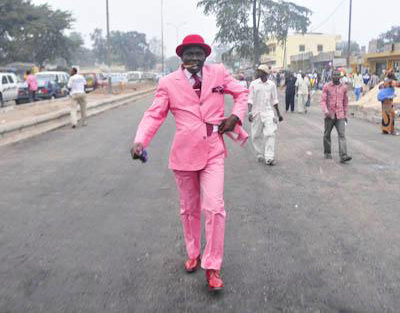
![]()
![]()
In the troubled southern suburbs of Brazzaville, the Congo’s capital city, a resilient group of men have traded arms for Armani. The sapeurs, as captured in Daniele Tamagni & Africolor at Danziger Proejcts through September 10th, are Congolese men who abide by a strict moral code that’s signaled publicly by their equally rigorous dress rules. Tamagni, an Italian photographer working in several African regions, has produced photographs that reveal men in impeccably tailored, brilliantly colored three-piece suits, brandishing canes and cigars in the middle of slum neighborhoods. These men save up for months—often years—for an outfit.
Though the Sape movement first gained popularity as a way of resisting the 1970s national ban on western clothing, Tamagni no longer sees it as politically motivated. Today he sees it as both a form of “social affirmation,” and as an art in its own right. Not only is “dressing up a way to escape and forget poverty…but also their aesthetic is amazing, because they re-mix and re-interpret the Western brand outfits.” If fashion has truly become a life philosophy for the sapeurs, it’s clear that it’s a living, breathing dogma. “It’s a mix of dandyism with old colonial accessories and hip-hop style,” Tamagni explains. “It’s impossible to define their aesthetic.”



A Star Is Found © AMNH\ Ben Oppenheimer, Douglas Brenner
A paintbrush, an easel, a canvas, some paint. It used to be that works of art were created using a no frills set of materials like that, with maybe a color palette or a beret thrown in for good measure. While we’re far removed from the heyday of the French Impressionists, it’s likely that even the most forward-thinking of contemporary artists working with the most advanced tools of the trade wouldn’t know how to operate a telescopic coronagraph. But that’s exactly what was used by researchers in the American Museum of Natural History’s Department of Astrophysics to capture the spectacular image of an unknown star in the Big Dipper for an out-of-this-world work of art.
Titled “A Star Is Found,” and bearing resemblance to some menacing aquatic invertebrate or an experiment with green gelatin gone wrong, the image was never meant to hang on the walls of a gallery. Rather, it is an accidental masterpiece created in the pursuit of scientific research. A new star was discovered, and in the process, so was an unexpected thing of beauty – or something close to beauty, anyway. For the new exhibit “Picturing Science,” the museum’s curators have assembled a collection of spectacular prints that were produced with the same basic approach.

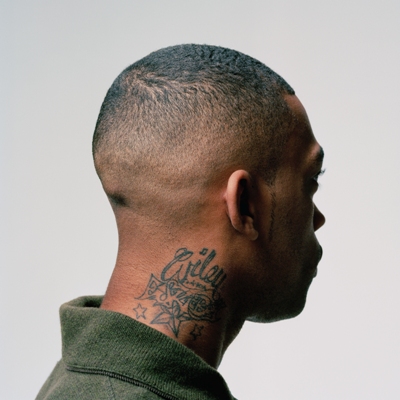
Big Dada
Garden-variety grime may be what Wiley offers on 100% Publishing, but anything from the Wiley garden is still worth cultivating. After fifteen years as a central figure in this sound-from-the-streets scene, Wiley doesn’t neccesarily need to exert himself much on his latest full-length. 100% Publishing lets the listener be a fly on the wall of the grime pioneer’s day-to-day life, as Wiley mutters to himself about losing things and finding them again. As is the wont of rappers, he shouts out his friends (“Hold tight Jamie”) and talks about the music business in an insider fashion that the average listener may not always be able to relate to — case in point, the title song. Still, there is an appealing simplicity to the sparse backing tracks, such as the carousel tune of “Boom Boom Da Na”. In keeping with this basic attitude, the spartan beats eschew trying to come up with inventive twists. This can be the default of many artists in the genre; they tend to make the biggest impressions with their debut and then, at best, repeat fading photocopies of that work.
Audio clip: Adobe Flash Player (version 9 or above) is required to play this audio clip. Download the latest version here. You also need to have JavaScript enabled in your browser.
Buy this at Other Music or iTunes.


SK4 record player, designed by Dieter Rams and Hans Gugelot, courtesy of Dieter Rams.
Can you remember the first time you picked up an iPod, and how stunning it was to feel the seamlessness of its surfaces, the subtlety of its controls, and the weight of it in your hands? Those qualities, so perfect, are the work of a team of ace product designers at Apple led by Jonathan Ive. It’s no wonder then that Ive wrote the introduction to “Dieter Rams: As Little Design as Possible,” a new book about this other, legendary product designer who headed the design department at Braun from 1955 to 1980. Rams’ canonical designs for the German appliance company, Ive says, have inspired many Apple products. The transistor, alarm clocks, record players, cigarette lighters, and other small machines Rams and his team designed are seductive in their simplicity, their modernity, and their naturalism. While each is as finely-composed as an abstract sculpture there is also something, as Ive says, “inevitable” about its design. You feel as if it could not have been designed any other way.


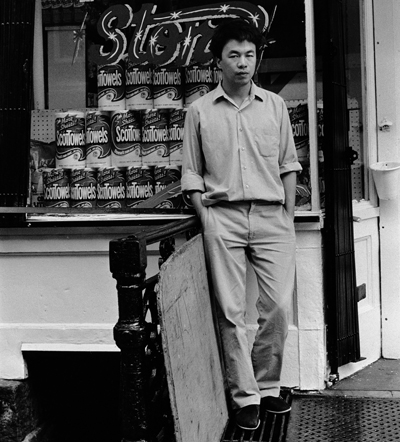
Ai Weiwei. Williamsburg, Brooklyn. 1983. Courtesy of Three Shadows Photography Art Centre and Chambers Fine Art.
Years before becoming the loudest voice of political dissent in the Chinese art landscape, 24-year-old Ai Weiwei arrived in a New York City seething with very different tensions from those of his hometown Beijing. His documentation of those years, now on display at the Asia Society through August 14 in Ai Weiwei: New York Photographs 1983 – 1993, reveal a young artist investigating his interests in an unknown city.
The exhibition is divided roughly in two, with half the photographs showing members of Ai’s inner circle, and half portraying the city’s social wars from a resolutely street-level perspective. This portrait of New York is intimate. Photos of AIDS protests being broken up, ruined Bowery storefronts being taken over by stray dogs, and a diminutive Al Sharpton facing crowds at a Tawana Brawley demonstration all speak to Ai’s devotion to activism while remaining wholly present in the moment. A 1989 series depicting shaggy, joint-smoking protestors in Tompkins Square Park is equally effective as an image of modern American advocacy and as an implicit comparison with the bloody Tiananmen Square protests of the same year.

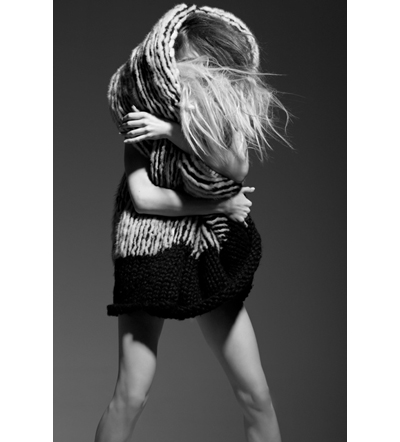
Image: Todd Anthony Tyler
It takes something special to get fashion’s more jaded tongues to start wagging and Uma Wang has it. The designer, who emerged seemingly from the shadows this season with a near-visionary collection of directional knit pieces, many by hand, has even “seen-it-all” industry-insiders a little stunned – and a lot excited. She also has them fooled, as this is no newcomer to the fashion scene. Wang put in 10 years designing clothes for various Chinese labels before launching her own in 2005, and with a few key dots connected along the way, seems now on an unstoppable trajectory toward “overnight success” – 15 years in the making. One such “dot” that connected was when Anna Wintour, Vogue’s legendary editor in chief, met up with Wang during her visit to China last November. When arguably the most powerful woman in fashion comes knocking, you must be doing something right.
Wang studied her craft at China Textile University in Shanghai, and London’s Central Saint Martins, respectively, but her real education came when an early employer sent her to “a knitting factory”, as she calls it, to learn the ins & outs of the knitwear trade through a rigorous, almost labor camp-like experience. When I ask her to elaborate, she reveals “I was living in the factory for a while. It wasn’t a very nice place and working long hours every day..”, but immediately follows the recollection with a statement of gratitude: “When I look back, this was one of the most important periods in my life and I treasure it.”

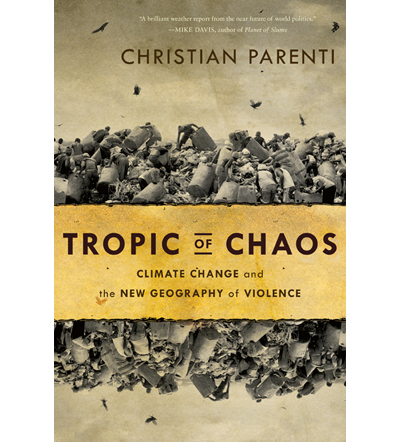
Jacket design by Ariana Abud, Jacket image from Panos Pictures
While much of the present concern over climate change has more to do with rises in temperatures and sea levels, could it be that one of the major consequences of a warming planet will end up being a rise in the occurrence of armed conflicts? That’s the scenario proposed in Tropic of Chaos, by the writer Christian Parenti. The recently published book warns convincingly of a “catastrophic convergence” in which long-term political mismanagement and instability collide with deep-seated poverty, along with the added threat of climate shocks in cases where each problem intensifies the magnitude of the next. And what’s more, the convergence is already taking place. If devastating cycles of flooding and drought weren’t reason enough to worry about our climate systems, there’s also the resulting violence that might go with them.
It’s an interesting thesis from a journalist who has spent more time covering war zones than climate zones. But as Parenti explains, his travels through the parts of the world most rife with conflict led him to observe that a common factor was contributing to the problems in each of them. He noticed that unpredictable changes in weather patterns were putting populations at risk of falling into the trap of poverty and of then fighting over the limited resources that remained. The isolated wars that he thought he was witnessing were but minor skirmishes in a greater war taking shape on a global scale.


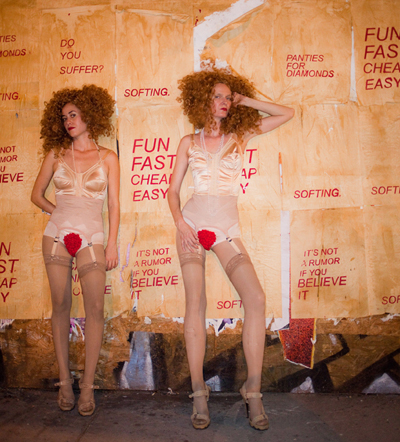
All images: Benjamin Heller
Artist and Honey Space director Thomas Beale has been a friend of PLANET for several years. When he recently wrote to ask if I would consider covering an exhibit that was showing at his space, one that he felt was truly extraordinary, I was so struck by his compelling description of it that I suggested he write it himself. Conflict-of-interest concerns aside, I felt no one could write as intimately about how his gallery space had been transformed by this unique art piece and the various emotional dramas and resolutions that have unfolded there through it. – Derek Peck
I honestly didn’t know if it would work. I knew we could pull off the installation, and that the artists were prepared to step into their performance roles. Yet the question remained in my mind: would New Yorkers take 45 minutes out of their day to step into a private exhibition experience, with no more indication of what lay on the other side of a door than the vaguely suggestive title Panties For Diamonds– A Psychodramatic Audition For Love In The Age Of Abandonment? And would enough people do this to keep the space active for five hours a day, five days a week?



Joyce Mckinney in TABLOID directed by Errol Morris. A Sundance Selects release.

With manacled Mormons, oddball accomplices, bondage modeling, and fantasies of celestial unions, Tabloid, the new film by Academy Award-winning documentary filmmaker, Errol Morris, has been said to contain something for everyone.
A reflection on love and self-delusion, it’s enigmatic and hyperbolic even for Morris’s standards, chronicling the misadventures of beauty queen cum sex vixen, 1970s British tabloid starlet, Joyce McKinney.
“She’s a real cipher…” Morris muses, as if puzzling over a combinatory algorithm. “A mystery, but a truly romantic sort of mystery.”
To discuss his new film and its storied femme fatale, I’ve met the director on a hot July afternoon. From his hotel suite in Soho we overlook 180 degrees of Midtown’s shimmering skyline.
”[Joyce]’s volatile, and crazy, and smart, and vindictive…I really don’t know what she is, but she’s a great subject for a movie.” He concedes, smiling.
Joyce McKinney may be a handful. I suppose she’s not the existential conundrum of Abu Ghraib or Iwo Jima (two topics of his past Standard Operating Procedure (2008) and The Fog of War (2003)).
Morris has always been an expert at locating the mad hatters and outliers in society (be it teenaged assassins, ex military commanders, or pet cemetery proprietors). It might be an inane headline that sets afloat his sail of inspiration.






 Facebook
Facebook Permalink
Permalink Digg
Digg Reddit
Reddit LinkedIn
LinkedIn StumbleUpon
StumbleUpon Tumblr
Tumblr


